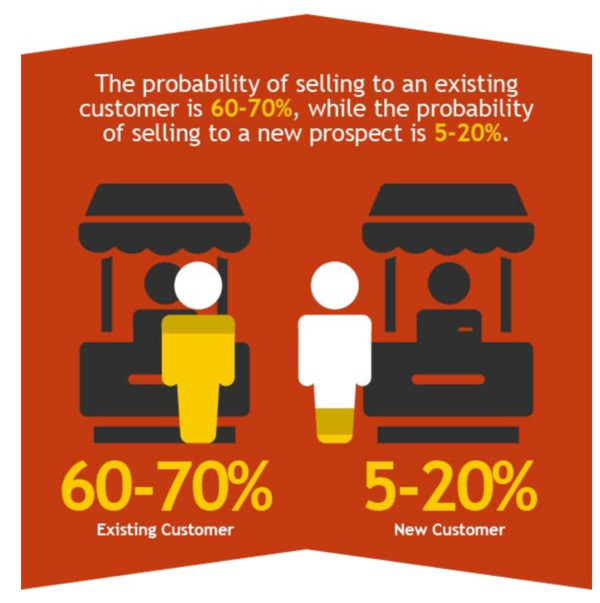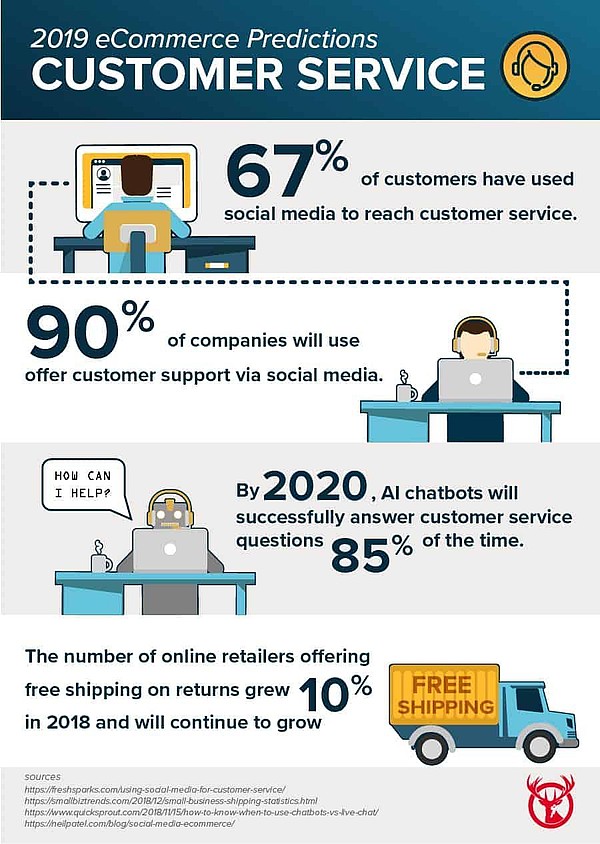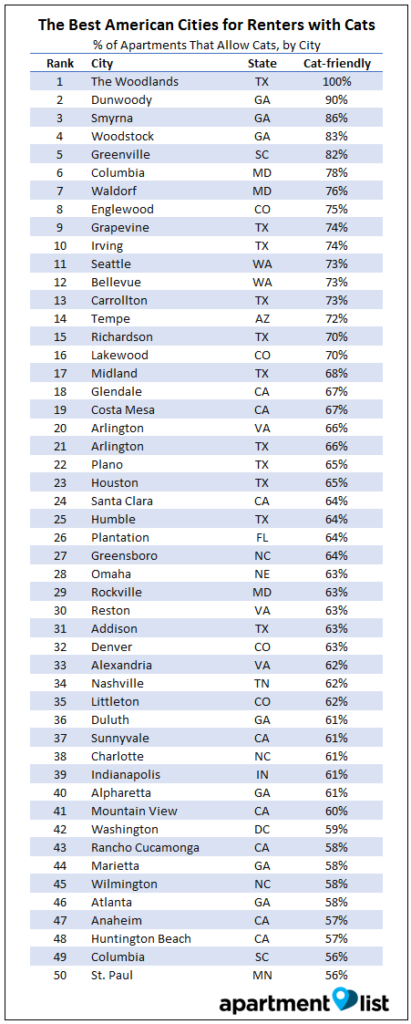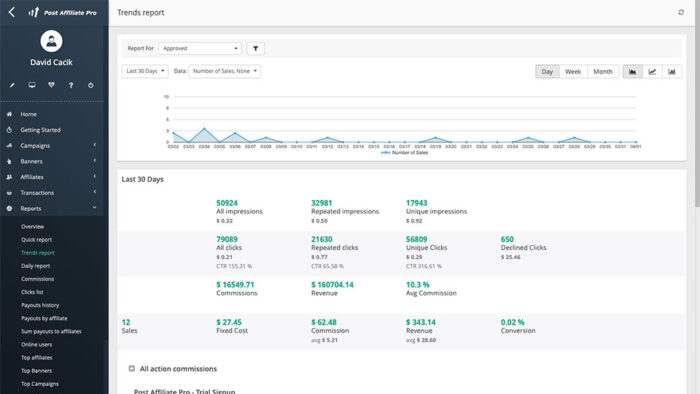Every business faces an eternal struggle: do I put more of my time and resources into existing customers or should I prioritize new leads?
Ideally, you would focus on both, but we all know that the day-to-day experiences of running and managing a business are rarely ideal. There aren’t enough hours in the day (or enough money in the bank) to do everything, so you’ve got to choose.
That’s precisely what we’re looking at:
- Determining your immediate place and needs
- Understanding customer retention tactic costs
- Leverage your high-quality staff
- One tactic that targets new and existing customers
- Measuring the competition
- Making deals (not with the devil)
- Bringing together marketing and customer service for a better experience
We won’t decide for you, but we think this guide will get you ready to choose what’s best for your company today and in the future. Dive right in and start developing the best plan for your eCommerce business and how you can best meet the demands and promises customers expect.
1. Determining Your Immediate Place And Needs
When budgets are limited, it’s time to focus on your best chance at raising revenues. For many businesses, customer retention is cheaper than customer acquisition. If you play your cards right, keeping an existing customer also means selling more to them.
The math for you and your team is to determine if your customer base is large enough to sustain the growth you need:
- If half of the existing customer pool purchased a new product from you, would you make the revenue increase you need to keep growing?
- If you lost a quarter of customers either through churn or replacing purchases instead of increasing purchases, would your new product launch or change be successful?
- Are your existing customers active and engaged enough to make you feel confident that they would respond to your marketing?
Your customer base needs to be large enough to fuel business growth for you to prioritize the existing market. If it isn’t, your mix should favor new customer acquisition. The other consideration is if you’ve got the marketing budget to meet those demands.
If your company is squeezed already, you can spend less on advertising and have your sales team make direct calls or emails to customers to promote new items or packages. Choosing the method really requires an understanding of the costs you could face, so let’s turn our attention there.
2. Understanding Customer Retention Tactic Costs
The old rule of thumb is that it costs five times as much to attract a new customer as it does to keep an existing one. So, for the cash-strapped, focus on your current users and try to increase the amount you sell to them over their life as your customer (also called the customer lifetime value or CLV).
Invesp has a great infographic that rounds up the stats on the two groups and notes existing customers are significantly easier to sell to and will typically spend 31% more than new customers. Your existing audience is also 50% more likely to try out a new product when you create it.

That might seem to end the debate right there, but there’s one thing to note here: you can’t always ask current customers to spend more. They may get turned off by the constant marketing or will switch products, so you’re cannibalizing one revenue stream for the benefit of another — and if you give great deals on new products, you might lose revenue.
If current customers are saturated with what they can buy from you (or your business models means new customers saturate quickly) spending time here instead of nurturing new leads can cause you to burn plenty of cash without seeing any significant gains.
The stage of your business may also determine some of these issues. For example, if you’re a large and growing company that’s got a significant volume of active customers, you’ve got to watch and see if churn is outpacing new customers.
Spending on the area of lower risk is usually safer. A high retention rate means happy customers. However, a high acquisition rate means you’ve got a good process for onboarding new customers and keeping them satisfied for the near term.
Prioritize whichever experience you’re better at delivering now, and work on the other in the background. That’s our take given that 86% of buyers are willing to pay more for a better customer experience.
3. Leverage Your High-Quality Staff
Customer experience should always have you think about your team and what they can do for you. Leverage their relationships with current customers and how they interact with new customers. Write down and track everything you can, from every customer you can.
Knowledge is a premium customer retention tactic for every business, every day.
Listening to customers, leads, and those who stop buying from you is a gold mine. It helps current customers feel heard and welcomed, making them more likely to buy. New customers feel valued right away, making them more likely to stay. And those that churn give you valuable lessons about what you’re doing right and wrong.
“Your most unhappy customers are your greatest source of learning.”
– Bill Gates
We recommend customer interviews and questionnaires when you are hoping to identify products or services that they could use but either can’t buy or aren’t buying from you right now. Don’t have your survey end in a sales pitch. You can provide them with coupons (or better yet, a free cup of coffee) so that they respond without feeling pressured.
Non-sales surveys are also an excellent way to discover where customers need help. You can be 100% up-front with these folks. Tell them that you want to know where they struggle or the problems, they have so you can improve your products or develop something new. The entire framework is about benefiting the customer down the road, not asking them to buy tomorrow.

Choose the staff who delivers these surveys or initiatives conversations wisely.
If you’ve got dedicated team members for specific clients, have them reach out directly. If you’re blasting an email list, include a signature and contact info for the person most likely to respond when the customer has a question.
Relying on the person your customers feel will get the problem solved. That’s probably not your marketing team (even if they’re creating and sending the email). Often, it’s the person who provides after-sale support.
Determining this will take time, but it’ll be worth it. You’ll get information that either identifies new product areas or shows that your current customers aren’t ready to buy more from you. Those answers are sometimes your best tool for determining a focus on existing or new customers.
And, if your rapport is really good, these emails provide the perfect way to get customers to start thinking about you in a new way. They prime your audience for cross-selling and up-sell opportunities in the following weeks or months.
4. One Tactic That Targets New And Existing Customers
We also like those surveys as the primary target in understanding your market in general. That research plus a look at your competition and areas where customers complain can give you a new tool to target both opportunities: new products.
If you’ve got the revenue to spare or have identified a significant gap that would improve your relationship with existing customers, consider a new offering. This can be an entirely new development or kitting your products, where you add multiple items together. Sometimes a kit lowers the barrier to entry enough that you get someone willing to be a long-term subscriber. That’s how many of those subscription boxes get their foot in the door and never leave.
An important note here is that you need the budget for the product and to promote it on your sales channels. It should have an entire launch campaign. Depending on how willing existing customers are to buy more (or how big of a problem they had), you can use advertising to target them.
However, most of your ads should be focused on new customers. This allows you to remain positive about the unique combination instead of asking people to replace something that was previously not so great.
The caveat is email marketing and the big list of names you already have. Here, your messaging can specifically address how the new solution is an improvement and the benefit of replacing something old. Keep things focused on how you’re giving the customer more support, and you’ll be in good shape.
The opinions of existing customers should define new options and product advancements, but it can be smartest to give new customers the best deal.
5. Measuring The Competition
Look where the market is saturated with offers and services to see if you need to be considering new segments to target. If there’s little overlap in your customer pools, they might be on to an opportunity you’ve missed.
They also might have figured out better ways to target your existing audience. Keyword analysis of their websites, ads, and landing pages, for example, might show you that your target identifies more as a “millennial with a growing family” than a “first-time homeowner.” There’s plenty of product overlap between those groups, but their search and browsing habits might be very different.
Review distribution channels, industries, and other data sources to look for untapped potential and areas where your competition is growing. At the same time, you might also find some gaps with your competitors that they haven’t noticed. It is a customer retention tactic that naturally benefits acquisition too.
Say you’re both in the pet industry and Texas is a battleground. Your competitor might think of the state’s culture as being very dog oriented and stick to pups in its ads. What they’ve missed is that three Texas cities are in the top 10 of Apartment List’s best American cities for renters with cats.

Measuring your market teaches you how to focus on your customers. Measuring your competition shows you where to apply which parts of that focus.
6. Making Deals (Not With The Devil)
Another way to new boost sales, with a potential secondary effect of pleasing existing customers, is to work with a company and get exposure to its sales list. If your products or services work well with an offer from an outside company, consider joining forces and sharing targets.
This works exceptionally well when their customers need your product or service to complete a task. The more they need you, the more likely you are to see a lift in sales without having to spend significantly. When you share lists, you’ve got a whole new potential set of targets that have already agreed to get your messaging.
Plus, both companies have a vested interest in increasing your sales. In some cases, that means they’ll do a lot of the heavy lifting.

Think of the last product you bought that had batteries included. You found what you wanted and bought it from that company without ever giving the battery maker a second thought. However, both companies got a sale out of you. That relationship is one of the best options for you because you’re able to move product consistently, and it can be a good goal to strive for when you think about what types of companies to work with on your next venture.
It can also give you the right mindset to capitalize on recent trends in affiliate marketing and relationships in e-commerce and other industries.
7. Bringing Together Marketing And Customer Service For A Better Experience
It’s easy to look at new customer acquisition and boosting the CLV of existing customers as two separate issues. It’s how we often think about it and most likely how you framed the Google search that brought you here.
However, the framing of one or the other might not be necessary.
The foundation for business success, whether you’re looking long-term with existing customers or short-term for new acquisitions is about making your product marketing and customer service work together for the benefit of all customers. From a business process standpoint, you’ll find a lot of overlap in your strategies to do both.
It might look like this:
- Create a customer base from a segment — whether a new one in the market or a set of existing customers
- Research and learn their values and what they want to support with now
- Provide a message that targets the need and appreciates their values
- Create channels specifically for customer service to ensure that they see you as a solution to their issues and are happy with how well the solution works
- Build up revenue by maximizing sales in this group, whether you’re targeting long-term users with a cross-sell or creating up-sells for new buyers
- Shift acquisition targets and efforts before you start asking for too much from these customers
- Repeat the customer service goals for your next acquisition targets, while keeping some channels open for retention services
You can find nearly every business on the planet in that cycle somewhere. Your best way to determine where to focus next is to look at your mix of established and new customers and see where you fit.
How to Scale Content Creation for Affiliate Marketing
Outsourcing content creation for affiliate marketing can be cost-effective and improve content quality. Hiring and managing freelance writers is key.
Thinking about an iDevAffiliate alternative?
Post Affiliate Pro is a versatile affiliate management solution with social media integration and customizable features, offering alternatives to Scaleo, HitPath, Awin, and AffTrack. It helps businesses optimize their marketing goals and increase sales through effective campaigns and conversion tracking.
How to Write a Good Review to Get Affiliate Sales from Your Articles
Use headings and subheadings to structure your content and improve SEO. Use specific keywords and analyze metrics to track progress. Patience and consistency are key in building a successful website.
How to create an engaging product page for your affiliate program
Product pages are crucial for affiliate programs as they reassure trust, improve retention rates, and increase sales. Creating engaging product pages involves displaying enticing product images, providing clear and informative product descriptions, using proper CTAs, improving page load time, and showing social proof.




